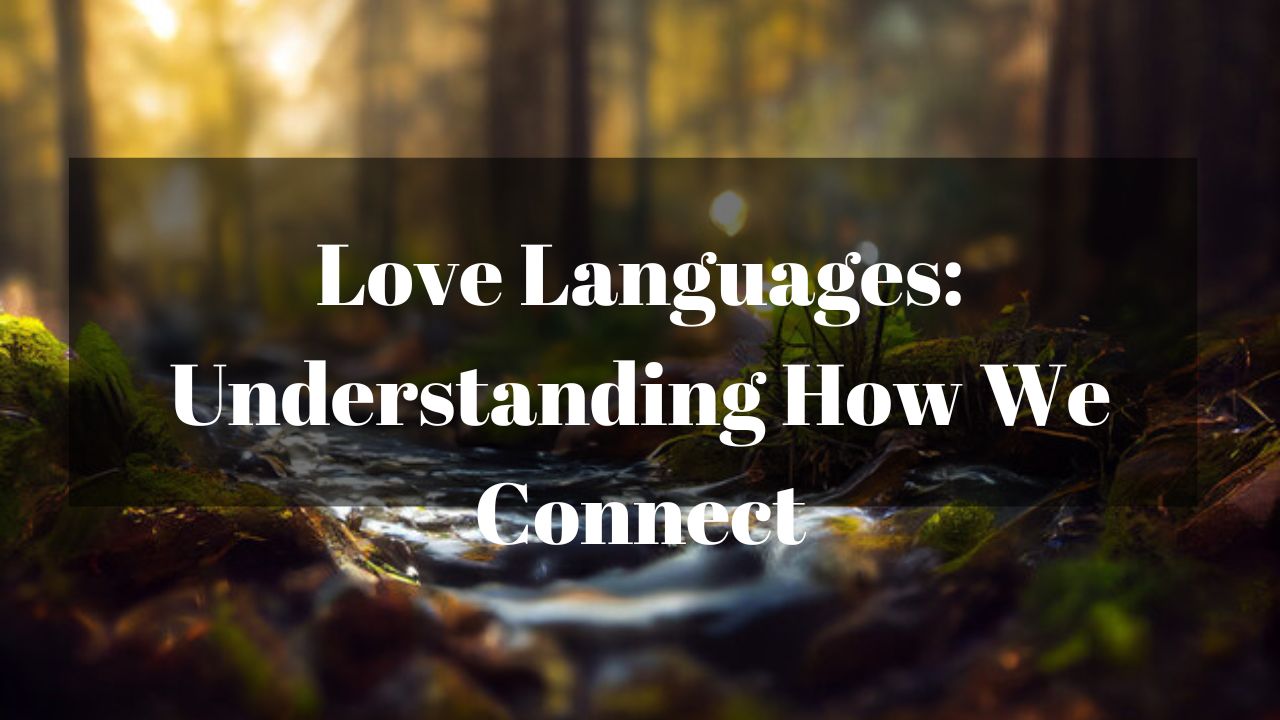Love Languages: Understanding How We Connect
In the intricate tapestry of human relationships, the concept of love languages provides a unique framework for understanding how individuals express and receive love. Coined by Dr. Gary Chapman, the theory suggests that people have distinct ways of giving and receiving love, forming the foundation for deeper and more meaningful connections. In this article, we will explore the five love languages, delve into their significance in relationships, and discuss how understanding them can strengthen the bonds we share with others.
The Five Love Languages:
Dr. Gary Chapman identifies five primary love languages, each representing a distinct way in which individuals express and receive love. These love languages are:
Words of Affirmation: Expressing love through verbal affirmations, compliments, and words of encouragement.
Acts of Service: Demonstrating love through actions, such as helping with chores, running errands, or performing tasks for the other person.
Receiving Gifts: Feeling loved through thoughtful and meaningful gifts that demonstrate attention and consideration.
Quality Time: Valuing undivided attention and spending quality time together as a way of expressing and receiving love.
Physical Touch: Finding connection and intimacy through physical gestures like hugs, kisses, and other forms of physical affection.
Discovering Your Love Language:
Understanding your own love language is the first step towards fostering healthier and more fulfilling relationships. Reflect on how you express love and what actions or gestures resonate most deeply with you. Similarly, explore how you feel most loved and appreciated by others. Identifying your love language provides valuable insights into your emotional needs and preferences in relationships.
Navigating Differences in Love Languages:
Recognizing that individuals may have different love languages is crucial for building strong connections. While you may express love in a certain way, your partner, friend, or family member may have a different primary love language. Acknowledging these differences and making an effort to communicate love in the recipient’s preferred language is key to fostering understanding and harmony in relationships.
Words of Affirmation:
For individuals whose primary love language is words of affirmation, verbal expressions of love and appreciation hold immense significance. Simple yet heartfelt compliments, words of encouragement, and expressions of gratitude convey love in a way that resonates deeply with these individuals. Positive affirmations serve as a powerful tool for reinforcing the emotional connection.
Acts of Service:
For those whose love language is acts of service, actions truly speak louder than words. Meaningful gestures such as helping with chores, running errands, or providing practical assistance demonstrate love and care. The effort put into making life easier for the other person is a tangible expression of affection and consideration.
Receiving Gifts:
Individuals with a primary love language of receiving gifts find deep meaning in thoughtful and symbolic presents. These gifts don’t necessarily need to be extravagant; rather, they should reflect the giver’s understanding of the recipient’s desires and preferences. The act of giving a carefully chosen gift is a tangible representation of love and consideration.
Quality Time:
Quality time enthusiasts value undivided attention and shared experiences. Engaging in meaningful conversations, enjoying activities together, and creating shared memories are essential ways to express love for individuals with this love language. Being present and fully engaged in the moment is the most meaningful gift for them.
Physical Touch:
Physical touch is the primary love language for those who find deep connection through physical affection. Simple gestures like hugs, kisses, holding hands, and other forms of touch convey love in a way that words or actions alone may not. Physical closeness fosters a sense of intimacy and security for individuals with this love language.
Applying Love Languages in Relationships:
Integrating the concept of love languages into relationships involves open communication and a willingness to adapt. Discussing love languages with your partner, family members, or friends creates awareness and allows for intentional expressions of love. Being attuned to the other person’s preferences and making an effort to speak their love language strengthens emotional bonds and nurtures a deeper connection.
Continual Growth and Adaptation:
Love languages are not fixed; they can evolve over time, and individuals may have a combination of primary and secondary love languages. Regularly revisiting conversations about love languages and adapting to changes in preferences or life circumstances is crucial for maintaining strong and thriving relationships.
Conclusion:
Love languages provide a valuable lens through which we can understand and enhance our connections with others. By recognizing and embracing the diverse ways in which individuals express and receive love, we open the door to more profound and fulfilling relationships. Whether through words of affirmation, acts of service, receiving gifts, quality time, or physical touch, the journey of understanding and applying love languages enriches our emotional landscapes and contributes to a tapestry of connections that are resilient, harmonious, and deeply meaningful.











